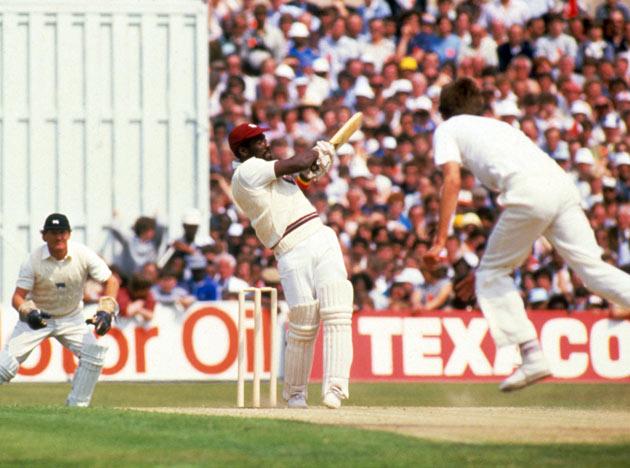Our modern batsmen seem to be as intent as ever on trying to employ the hook shot like our former greats, but apparently with less effective technique and even less success. Imitation is definitely not flattering.
I once saw Sir Viv move his face forward into a bouncer, inspect the ball, and dispatch it over backward square for six. And later, much later, on remembering that particular feat, I concluded that the hook shot, executed successfully, is more art than technique.
That is not to say that technique is not an important, even a necessary part of consistently executing a successful hook shot. Both upper and lower torso positioned just so, the legs providing a stable base to upper body, hands and head swinging through the line of the ball. Eyes on the ball from the beginning of the stroke to its logical conclusion over the boundary. But that is as far as technique will help the hooker.
Some of our greats hooked off the front foot, others off the back foot, and some midway between front and back foot. And they got that ball away with a mere flick of the wrists sometimes, a whip over square leg, or a power cut over mid-wicket or over point. And it was in those myriad different hook shot selections they demonstrated their artistry, and painted their masterpieces.
The ability to pick up the short, rising delivery seemed uncanny at times, literally flowing into position, footwork crisp and precise, hand and eye co-coordinating perfectly to get into the stroke at the optimal moment to execute what, in the blink of an eye, they had calculated to be the best response to the one ball intended primarily to intimidate.
There were those of our happy hookers who were like ballerinas, swiveling on tiptoe to make contact at the precise point and moment where a delicate nudge ‘helped’ the ball on its way to the boundary. And then there were those who simply stood their ground and bludgeoned the projectile into a different orbit, both ball and bowler screaming, one albeit silently, as the attempt to intimidate was deposited unceremoniously into the spectator stands.
A hook shot used to demonstrate the ‘sang froid’ of a batsman like no other shot in his arsenal, not only providing a specific response to the bowling threat, but also generating a psychological notion of invincibility back to the bowler to create doubt in the bowler’s mind as to that bowler’s ability to dominate the batsman. In the eternal contest between bat and ball, the hook shot was the succinct answer to the fast bowler’s gambit of using the bouncer to attempt to dominate the bat.
Today, our batsmen flail their bats at those bouncers, or more often than not, almost break themselves in two trying to get out of the way of a ball they should have picked up a day ago, making journeymen bowlers look like dominators, when in fact it is our batsmen who are simply pedestrian in their execution.
Our batsmen always seem perpetually surprised when they get a short rising delivery, as if this is the first time they have every experienced such a tactic. Even when they attempt to engage the bouncer, our batsmen have now adopted the foreign habit of forcing the bouncer to ground, bat rolling over ball, as if the ball is a live explosive threatening to blast the team into oblivion, rather than treating it simply as a bowling intimidator whose effect should be negated by dispatching it over the boundary.
Maybe our batsmen of today lack the necessary skills to handle a bouncer successfully. Maybe they don’t view the bouncer as an important ingredient in the contest between bat and ball, with its continuous impact on the psyche of both batsman and bowler, so that they let the bowler get away with bouncer. Or maybe our modern batsmen just don’t care that much, or are not as committed. Whatever the reason, today, our West Indian batsmen are more likely to skitter away from a bouncer than to engage and put it away.
I wonder if their perception of their ‘career’ is influencing their batting.


Leave a Reply